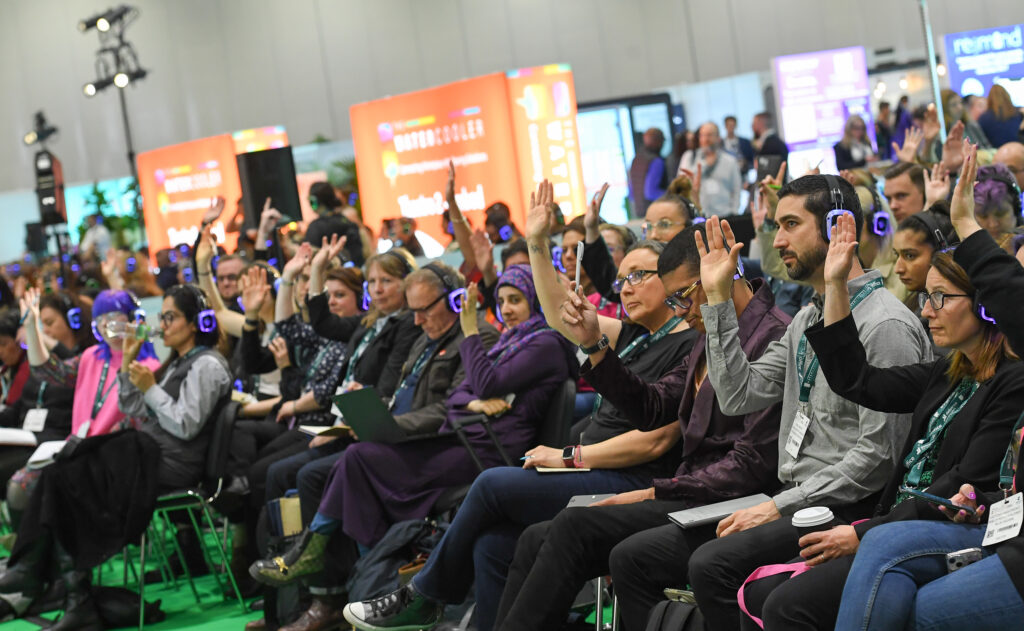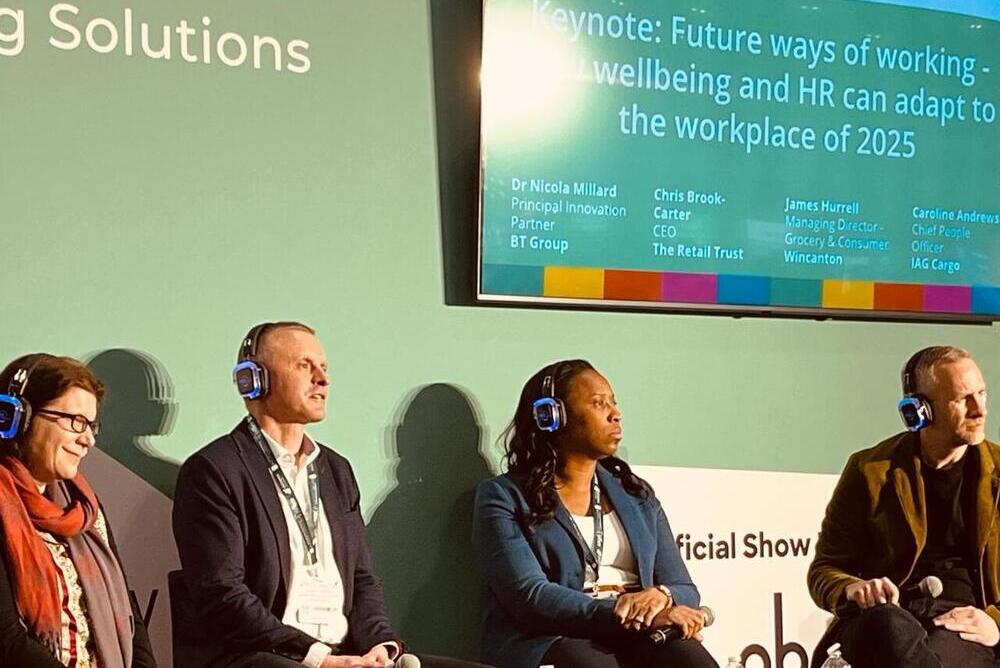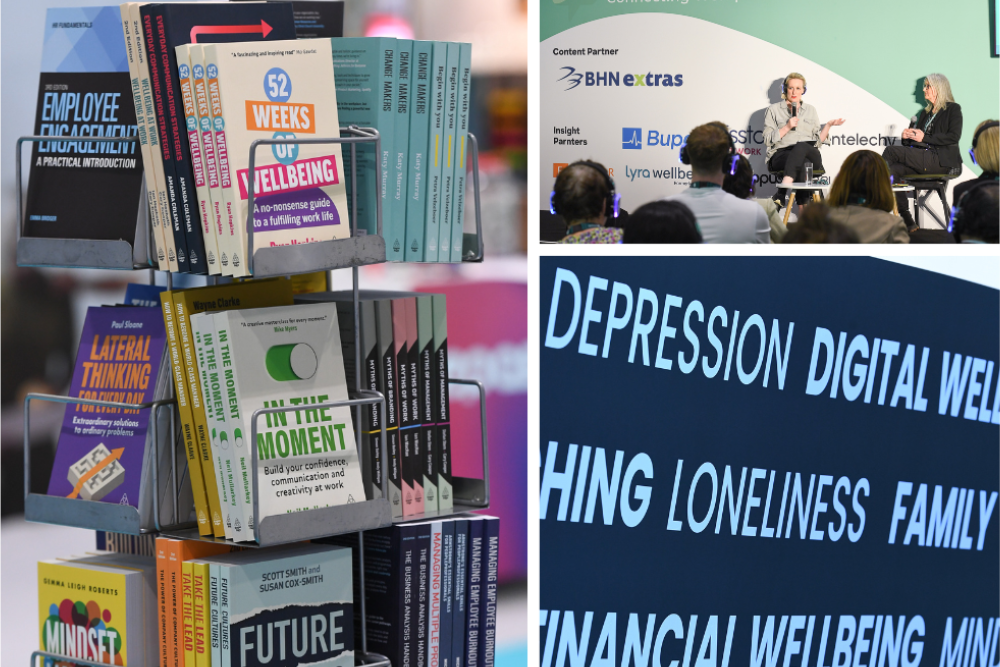AI has been one of the hot topics at this year’s The Watercooler event. As proof of its power and role in productivity if used as a helpful adjunct, this feature brings you key insights from some of today’s sessions cherrypicked by transcription service Otter.ai…
It seems fitting to start with the session on the ‘Future ways of working’ because this session’s final conclusion (according to Otter.ai) was about the importance of integrating AI. We need to recognise, said Otter.ai, “its impact on employee wellbeing” and “the need to educate workers on its benefits and [ability to] automate routine tasks to create more engaged and healthier workforces”.
Note: while Otter.ai did an overall good job of summarising these sessions, human intervention was still necessary to add context and, sometimes, better grammar so that the notes made full sense!
As this first session below also concluded, organisations are best using AI “to complement human work, not replace it”.
Key takeaways: Future ways of working – how wellbeing and HR can adapt to the workplace of 2025
- In the new world of work, employers need to work hard to ensure employees have an emotional connection with the workplace
- Employers also need to have inclusivity at the top of the agenda when considering hybrid working
- Employees need to be involved in enhancing their own wellbeing (ie. it can’t just be seen as an employer’s responsibility; it’s a dual responsibility)
- It’s important in a hybrid working world that leaders become adept at, and trained in, managing tensions; leadership skills are crucial for organisations to navigate the future of work effectively
- Hybrid work models are challenging for leaders to manage, particularly when team members are not physically present
- Authenticity will become more important as AI is adopted more
Key takeaways: Wellbeing washing – where does the responsibility for employee wellbeing lie?
- ‘Wellbeing washing’ was defined as when organisations promote themselves as prioritising employee wellbeing, but this doesn’t match the actual experiences of employees. This leads to employees feeling unsupported, despite good intentions, and the creation of a ‘tick box’ culture
- Panel agreed that wellbeing washing is a spectrum from toxic cultures to excellent provision, with many organisations sitting in the middle
- It’s crucial to address organisational toxicity if an employer genuinely wants to support employee wellbeing and key challenges can be identified through analysing people data like attrition and productivity data
- Employers must take ownership of the wellbeing agenda and involve everyone in wellbeing initiatives; ownership and accountablity for wellbeing strategy is crucial for success
- Concerns were aired about the accountablity for wellbeing and the importance of leadership involvement with wellbeing strategies; leadership often underestimate their role in wellbeing and it’s a journey to involve them more
- Organisations are increasingly shifting from a reactive to proactive approach, as well as a more tailored approach to individuals
- Wellbeing strategies can be clearly linked to KPIs and measurable outcomes (case studies on Unilever, GSK and Johnson & Johnson mentioned)

Key takeways: How to tackle wellbeing challenges and improve engagement through flexible working practices
- Inclusive design and co-creation of spaces with employees are crucial to success and directly impact an organisation’s culture and operations
- It’s vital to really understand employee needs and tailor solutions to these needs, with them
- For this understanding, talking to employees in person is key to build trust and demonstrate commitment to employees, as is having an inclusion and diversity focus
- Employers could adopt a pilot or ‘test and learn’ approach to flexible working initiatives, so they can start collecting metrics and evidence to measure the impact on things like engagement rates, sickness, absence, etc
- Organisations should empower teams to define what ‘protected time’ means for their roles and ensure that this consultation is done with an employee-led approach; don’t make assumptions about what they want
Key takeaways: The Future of the Employee Wellbeing Profession
- In the evolution of the profession evidence based approaches are crucial
- The profession requires continuous learning and staying up to date with the latest research and trends, as well as embracing change and the use of realtime data to drive positive change
- One option to continuously learn and progress a career in this industry – as talked about by panellists – is a Master’s degree in Workplace Wellbeing at the Universirty of Nottingham
- Other ways to keep up to date include reading new research, including academic papers, and connecting with other professionals in the field, as well as being connected to training organisations like CIPD
- Learning can also happen via getting feedback from employees and being curious and reflective
- In progressing in the profession, there’s huge value in sharing knowledge and research across the industry, as well as offering mentoring and support
- Health and safety skills and qualifications were cited as valuable ways to secure Occupational Health roles – health and safety professionals with risk assessment and control skills were also noted to be in demand generally
- Organisations could consider creating a ‘wellbeing book’ for managers, aligning with ISO standards, to promote knowledge and culture change, and inform employees about what the profession does
- It’s important going forward that wellbeing professionals are seen as strategic partners, not event organisers
- Professionals need to be able to link wellbeing support to performance with data to demonstrate this link















